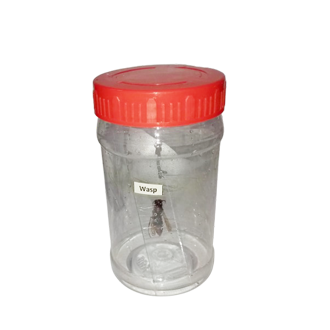Description
Wasp Preseve Specimens is essential for entomological studies, educational purposes, and artistic endeavors. Proper preservation maintains the structural integrity and appearance of the specimens, allowing for detailed examination and display. Below is a comprehensive guide on effective methods to preserve wasp specimens, including preparation, preservation techniques, and storage solutions.
1. Preparation of Specimens
Wasp Preseve Specimens Before , it’s crucial to prepare the wasp specimens appropriately:
- Collection: Carefully collect wasps using nets or traps to avoid damaging their delicate structures.
- Handling: Use forceps or gloves to handle specimens, minimizing direct contact to prevent damage and preserve natural oils.
2. Preservation Methods
Several methods are effective for preserving wasp specimens
- Freezing: Placing wasps in a freezer is a straightforward method. Store the specimens in small ziplock bags or airtight containers to prevent moisture loss. Ensure they are fully thawed before proceeding to pinning or further preparation. citeturn0search0
- Pinning: Direct pinning through the thorax, specifically between the bases of the forewings and just right of the centerline, is standard for wasps. This method supports the specimen and allows for easy handling and display. citeturn0search7
- Carding and Pointing: For smaller specimens, mounting them on cards or points provides stability and prevents damage. This technique is particularly useful for minute wasps where pinning may not be feasible. citeturn0search5
3. Drying and Setting
After pinning or mounting:
- Positioning: Arrange the legs, antennae, and wings in a natural position using setting boards or foam. This step is crucial for maintaining a lifelike appearance.
- Drying: Allow the specimens to air dry in a well-ventilated area. Avoid direct sunlight to prevent color fading. Once dried, the specimens will retain their set positions permanently.
4. Storage Solutions
Proper storage ensures the longevity of preserved specimens:
- Display Cases: Utilize display cases with glass fronts to protect specimens from dust and physical damage while allowing for observation.
- Storage Boxes: Acid-free entomological storage boxes with tight-fitting lids protect against environmental factors and pests. Including desiccants can help control humidity levels.
- Labeling: Accurately label each specimen with collection data, including date, location, and collector’s name, to maintain valuable scientific information.
5. Commercially Preserved Specimens
For those interested in acquiring preserved wasp specimens without the preservation process
- BicBugs: Offers a variety of real unmounted, mounted, or framed preserved bees, wasps, and ants for sale. They are a trusted insect supplier in the United States since 2019.
- BugsDirect: Provides natural dry-preserved and dehydrated entomology specimens suitable for entomologists, artists, and educatorsUtilize display.
6. Additional Considerations
- Legal Compliance:Ensure that the collection and possession of wasp specimens comply with local wildlife regulations to protect biodiversity.
- Utilize display cases with glass fronts to protect specimens from dust and physical damage while allowing for observation.
- Safety Precautions: When handling live wasps, exercise caution to avoid stings. Use appropriate protective gear and handle specimens gently.
By following these guidelines, you can effectively preserve wasp specimens for various purposes, ensuring they remain in excellent condition for study, display, or educational use.





Reviews
There are no reviews yet.